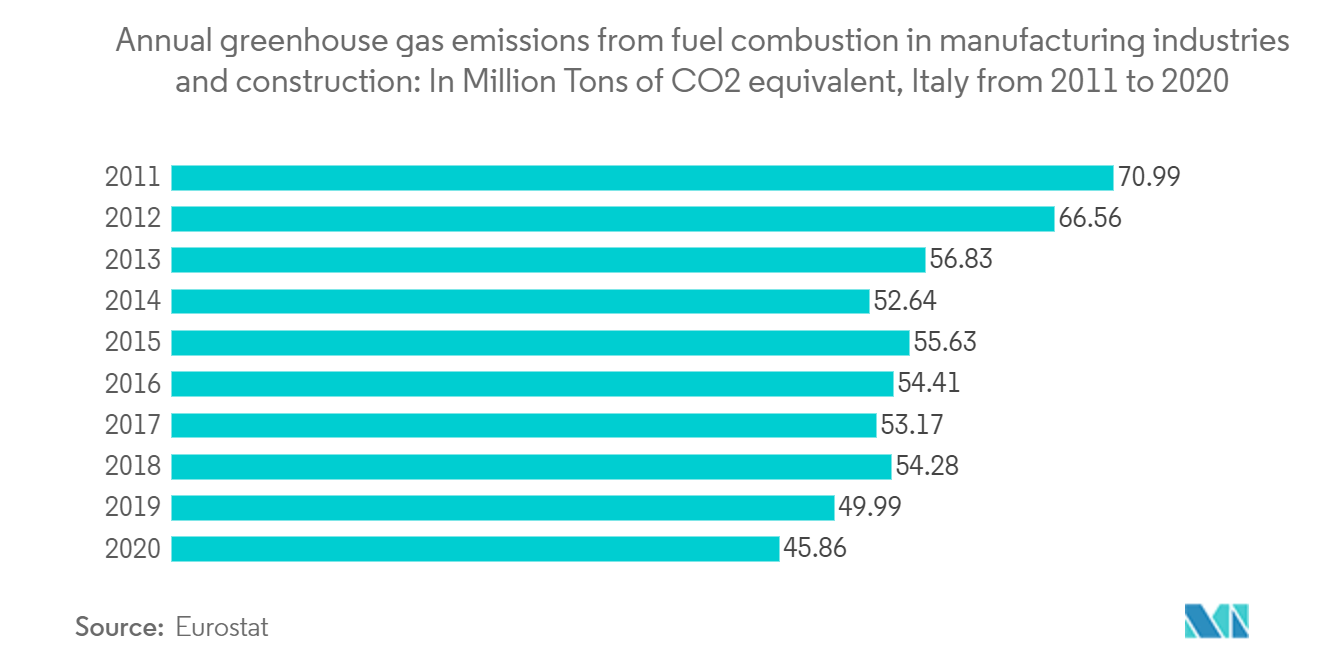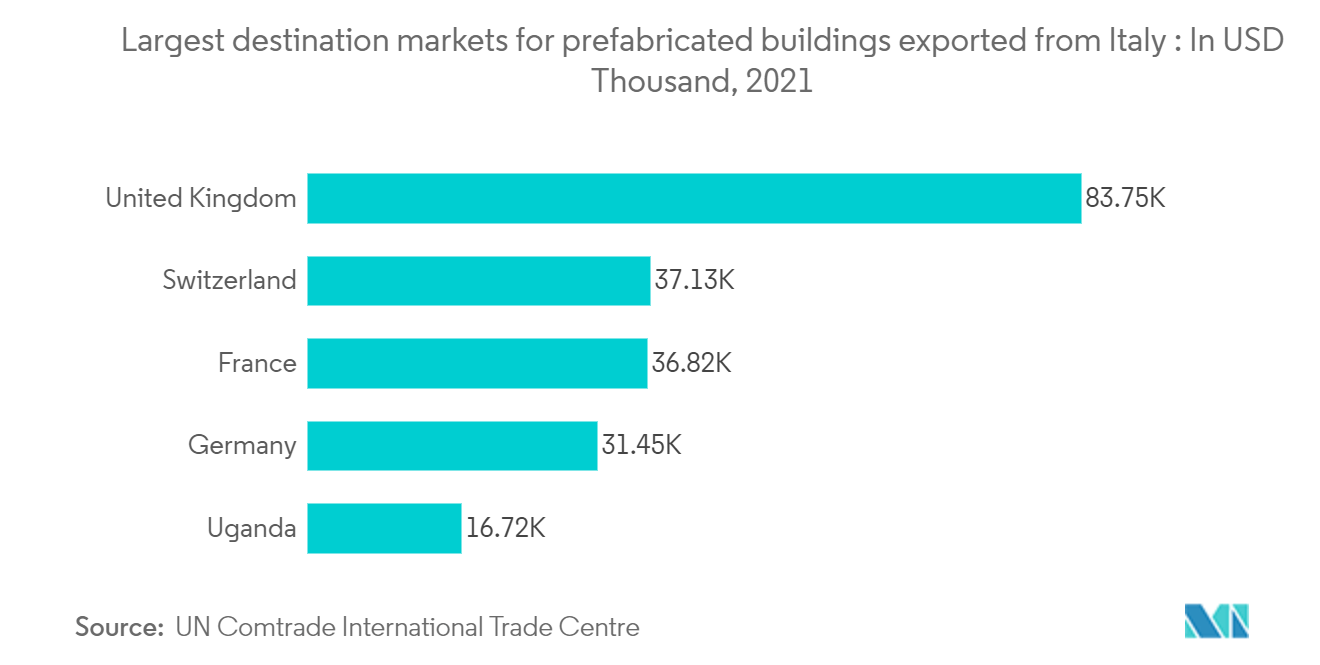Market Trends of Italy Prefab Wood Buildings Industry
This section covers the major market trends shaping the Italy Prefab Wood Buildings Market according to our research experts:
Increase use of Bio-Based Materials for the Italian Construction Industry
All European areas have seen a growth in their consumption of forest products over the past 20 years, which has been helped in part by government initiatives that promoted the use of wood in the construction and remodelling industry by putting energy efficiency measures into place. With roughly 2.8% of the dwelling stock and 8.5% of the entire construction stock, wood-based preassembled components represent for the segment of this sector with the largest growth in Italy. Italy surpasses nations with a long history of using timber for construction, like Austria, Finland, France, and the Netherlands, to become the fourth player in Europe in the wooden building industry. Lombardy has the greatest concentration of wood construction businesses, followed by Veneto, Emilia Romagna, and Trentino Alto Adige.
Modular timber structures also enable the storage of a significant quantity of carbon into the structure (about 50% of the mass), particularly if based on substantial wooden elements (e.g., plywood, LVL panels, cross-laminated timber (CLT), etc.). These building technologies have a number of advantages that can be used in both new construction and renovation and retrofit of existing structures. The use of wood for building typically results in lower energy intensity and fossil-carbon emission when compared to other structural conventional materials, such as concrete.
Furthermore, a growing interest in wood-based products and their exceptional mechanical characteristics is causing a quick change in the Italian market. Industries that serve the Italian market attempt to achieve local production by concentrating manufacturing as much as they can within their own nation, in line with the new environmental trend. The demand for timber-framed panels for new building has been steadily rising over the past 10 years since they are a legitimate prefabricated alternative. In the EU, the building industry is responsible for about 40% of all primary energy use, with the residential market accounting for 63% of this total.

Italy is the key consumer of the prefabricated buildings
Wood dominates the prefabricated construction sector in Italy. As previously said, wood is an abundant, reasonably priced, and easily available resource in Italy. Additionally, it is more adaptable in terms of construction purposes and environmentally beneficial. Italy (29%, based on EUR), Germany (15%), and the UK (13%), which together accounted for close to 58% of EU prefabricated construction consumption, had the highest consumption rates. Italy (123.4 EUR/year) had one of the highest per capita consumption rates among the top consuming nations. As compared to the EU average of EUR 49.9 (USD 52.66) per year, it was much higher. The per capita consumption in Germany (48.0 EUR/year (USD 40.66/year)) and the UK (52.1 EUR/year (USD 54.99/year)) was comparable to the average per capita consumption in Europe.
The demand for prefabricated buildings from the commercial sector will rise with moderate economic growth as these structures have several benefits in terms of production technology, build quality, design, and style. When utilized for the speedy establishment of new stores, businesses that provide services, and other facilities. Italy was the main EU producer of prefabricated buildings, accounting for 27% of the EU's overall output with a production of around 7,379 million EUR (~USD 8 billion). Germany (14%), the UK (13%), France (8%), Sweden (7%), the Netherlands (4%), Spain (4%), and Austria (4%), in that order, came in second.
Wooden homes may play a role in Italy's eco-friendly future, according to the sector's performance in 2019, which saw a 2.3% growth in production and a total output of 1.35 billion euros (~USD 1.5 billion). In 2019, 3,300 wooden homes were constructed in Italy, with 7% of all building permits being granted. Additionally, internationalisation has increased, with 20% of exports topping EUR 60 million (USD 63.32 million).

